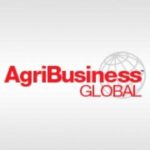Making Sense of Regenerative Agriculture and Measuring Its Impact
Editor’s note: As regenerative agriculture moves from being a buzzword into on-farm practice embraced by the value chain and farmers alike, AgriBusiness Global recently interviewed Jordan Le Roux, Senior Director of Sustainability at Kynetec, on what regenerative agriculture means, and the numbers behind the trend.
AgriBusiness Global: Let’s start at the beginning. What is regenerative agriculture?

Jordan Le Roux
Jordan Le Roux: This is the million-dollar question! There is currently no universally accepted definition of regenerative agriculture, but the various definitions outline similar principles. Kynetec defines regenerative practices for the purpose of our farmer surveys as:
“Regenerative agricultural practices focus on improving soil health and water quality, which in turn conserve and or improve biodiversity, with the goal to improve the health and quality of crops in the long term and the general quality of the environment.”
Regenerative agriculture principles are not new, though they are a lot more talked about now mainly due to climate change. Essentially, regenerative agriculture takes us back to the pre-WWII era of agriculture before a generation of farmers used chemistry to increase yield at an exponential rate to feed rapidly growing populations around the world. The 1940s, 50s and 60s were a golden age for agrochemical ag, and while there have been many benefits, the downsides of monoculture cropping, and soil degradation are ready to be set right by regenerative practice. That said, regenerative agriculture does not exclude the use of synthetic chemistry.
For further context, and so as not to pit conventional and regenerative agriculture against one another, comparing a farm to a human gut microbiome can be useful. We are aiming for many interconnected microbes that work together productively to produce energy as an output – and while there is preference for biochemistry, sometimes synthetic chemistry might be required to effectively counter negative overgrowth.
While regenerative agriculture could be perceived as a step back to historical farming methods, however – today, practitioners of regenerative agriculture combine traditional methods and smart farming for maximum insight and efficiency. There is a general acceptance that regenerative agriculture is a long-term strategic move for farm businesses that is likely to initially result in reduced yield in the short term, followed by increased crop quality, yield, water quality and biodiversity in the longer-term. Regenerative agricultural techniques are more widely used than many may expect. Data from our annual farmer survey revealed that in the USA 14% of soybean growers were adopting cover crops and 25% of them using conservation or no tillage methods.
Kynetec’s data and analytics shows that farmers embracing regenerative agriculture are doing it for two main reasons: soil health improvements, and reduced input cost. These same farmers should be optimizing, not just cutting out spend, instead investing time and money in smart farming tools.
But how does this translate at farm-level? The farmer’s age impacts the likelihood of the uptake of regenerative practices, as does the farm’s size. For example, in Germany, the larger the farm the less likely they will adopt min or no till in winter crops, preferring instead to plough. In 2022, over half of the farms between 20ha and 100ha in size adopted min or no till, whereas this number drops to less than a third for farm sizes above 100ha+.
Ultimately, a comprehensive approach to regenerative agriculture will consider the connection between the various elements that build a successful farm business, which includes also social, economic, and environmental aspects.
ABG: Regenerative agriculture is a bit of a buzzword. How can it transition from fantasy to reality on-farm, and how is it measured?
JL: Governmental policy is speeding up the transition to on-farm regenerative practices that are so inclined and delivering to the bottom line. Farms are first and foremost a business, and so must remain profitable. While farmers are endlessly practical and capable of implementing the on-the-ground changes, the complexity of measuring is not for the faint hearted; and takes a certain type of farmer who must not only have the appetite for technology and figures, but also the time to measure and evaluate.
This is where smart farming comes into its own, with on phone app-based platforms able to support on-farm measurement while working. Data collection can be endless, so farmers need to be clear on what they are trying to achieve, and what data they will evaluate and act on, not just collect. Action and outcomes are all related to how, and what, the farm is measuring. Measures include soil organic carbon, plant root depth, number of indigenous species, resilience of the cropping system, soil moisture, topsoil depth….it goes on.
Measuring regenerative agriculture is complex due to the interconnection of the multiple variable elements on-farm, so doubling up smart farming platforms and close work with an agronomist allows farmers to map and monitor nutrient levels, carbon stores, soil structure and quality, disease, pest and weed challenge. Without this information, it is difficult to truly measure the impact of management change on biodiversity, water quality, yield, carbon emissions of crops and ruminants. For growers, combining on-the-ground data with observation data as well as weather records will pinpoint not only where the regenerative project starts, but also provide measures for progress over the years.
At Kynetec, we connect with hundreds of thousands of farmers every year on multiple subjects, and regenerative agriculture and sustainability are two of them. We measure and track how regenerative agricultural practices are adopted by talking to farmers in over 20 countries and across 30 different crops. This enables our clients – players across the agrifood chain – to get the most up to date regen market landscape, with the ability to drill down on farmer profiles and view outcomes, such as yield.
ABG: How can regen support new product categories?
JL: The entire value chain from input producers to food manufacturers can support farmers in their adoption of regen practices with goals to have a more sustainable and resilient food chain, together with carving a value-add niche of regeneratively-grown products, potentially positioned in-store as a halfway house to organic goods. In the UK, McCain has already introduced Regen Fries, made from regeneratively grown potatoes.
In addition to the potential of introducing a novel category, stakeholders are hedging long term, as better soil quality will lead to greater supply chain resilience. Supporting farmers also extends to agrochemical and fertilizer brands, which play a crucial role when employed with precision in alignment with smart farming technology.
From a grower perspective, entering regen contracts is of double benefit. Firstly, a guarantee of income in the face of the potential initial reduced yield, and secondly the list of benefits to the ground – enhanced soil quality, decreased input requirements, improved water quality, and, consequently, a reduction in greenhouse gas emissions along with some carbon sequestration.
ABG: Does Kynetec have insight into carbon tracking and emissions?
JL: Kynetec supports scope 3 emissions management and reduction, with annually collected primary data from a statistically representative sample of farmers. The data is collected at field level and enables Kynetec to estimate commodity emissions at high resolution geographical level – think 1km grid square per county. If users want to access data from their sourcing farms, Kynetec can assess emission data as well farmer behaviors, and even interview farmers in a specific sourcing region. Ultimately Kynetec can help companies reporting their scope 3 and water use, calculating baselines, assessing potential additionality, supporting commodities sourcing and much more.
Learn More About RegenTrak
Kynetec’s RegenTrak provides focused, off-the-shelf insights on specific grower regenerative practices and trends. RegenTrak provides farmer-driven insights on regenerative agricultural practices, including cover crops, tillage, fertilizers and carbon program adoption. RegenTrak also includes Kynetec’s proprietary RegenScore index to understand local regenerative performance. For more information on RegenTrak, please contact Jordan Le Roux, Senior Director Sustainability [email protected] and/or click here.






